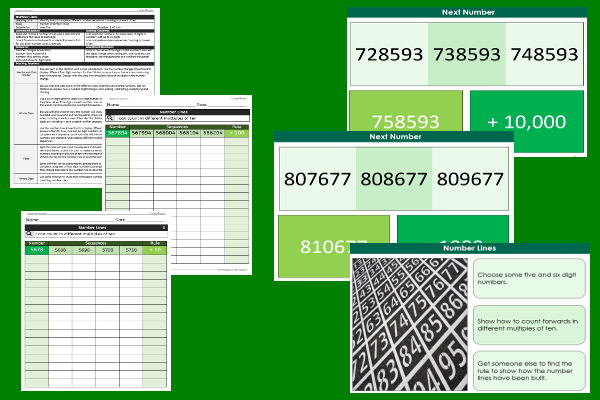Lesson Five – Number Lines

This maths teaching pack for Key Stage Two gets the children to identify and record how to complete a selection of number sequences for five and six digit numbers when counting in steps of different powers of ten.
The class can produce number lines using five and six digit numbers for a partner to identify the matching rules that need to be used when counting in different steps.
Download this teaching pack including a lesson plan, classroom activities and an interactive presentation to identify and record how to complete a selection of number sequences for five and six digit numbers when counting in steps of different powers of ten
Activities in this teaching pack include differentiated worksheets to select and record different number sequences when counting in powers of ten using five and six digit numbers for core and extension ability levels and four digit numbers for support ability levels.
The interactive presentation gets the children to explore how to complete a range of different number sequences when counting in powers of ten.
This lesson is part of a maths scheme of work to get the children to practise comparing and rounding numbers to six digits to their nearest ten, hundred and thousand by utilising the place value of their digits. There are teaching activities for shared learning, differentiated worksheets to support independent learning and interactive presentations to introduce concepts and key skills.
-

Determinant Lists
Explain and model how to make lists of objects used and found in different locations to match the correct determinants of a and an
-

English SPAG Assessment
Assess abilities in composing sentences for fiction and non-fiction using the correct spellings, punctuation marks and grammar vocabulary phrases
-

Maths Arithmetic Assessment
Assess abilities in solving arithmetic number problems for addition, subtraction, multiplication and division when working with informal and formal written calculations
-

Environment
Identify and describe some of the special landscapes and locations that can be found in the world and reflect on how they can be protected and preserved for the future
